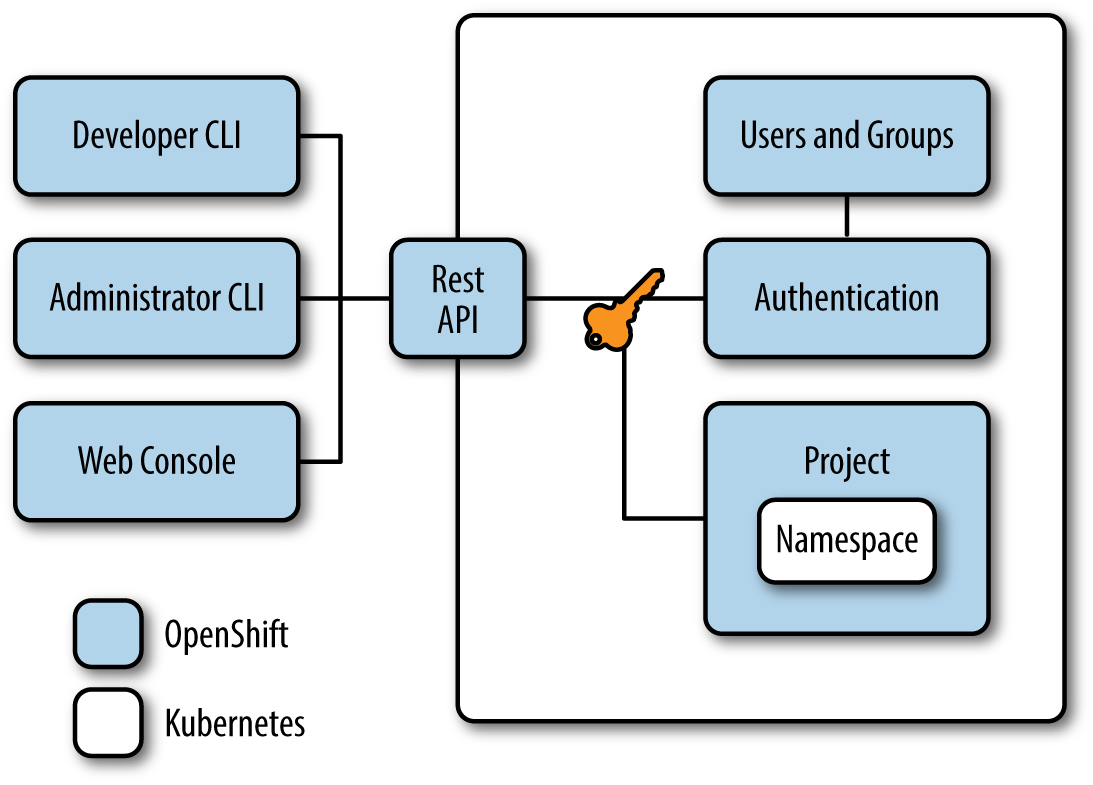Chapter 2. Concepts You Need to Understand
Now that you understand the bigger picture of where we are going with Docker containers, Kubernetes, and OpenShift, we need to introduce you to some of the key terminology we will use throughout the book.
We cover the basic concepts of Kubernetes and discuss how OpenShift builds on them. In general, you can view Kubernetes as being aimed at Ops teams, providing them with a tool for running containers at scale in production. OpenShift adds to this by also supporting the work of a Dev team and others by making the job of the Ops team easier, which helps to bridge the gap between Dev and Ops and thus enable the latest DevOps philosophy.
Interacting with OpenShift
The primary grouping concept in Kubernetes is the namespace. Namespaces, as the term suggests, provide a scope for names. More specifically, namespaces provide the scope named resources that describe your application and how it should be deployed. Namespaces are also a way to divide cluster resources between multiple uses. That being said, there is no security between namespaces in Kubernetes; if you are a “user” in a Kubernetes cluster, you can see all the different namespaces and the resources defined in them.

Figure 2-1. OpenShift access and control
The first new concept OpenShift adds is project, which effectively wraps a namespace, with access to the namespace being controlled ...
Get OpenShift for Developers now with the O’Reilly learning platform.
O’Reilly members experience books, live events, courses curated by job role, and more from O’Reilly and nearly 200 top publishers.

